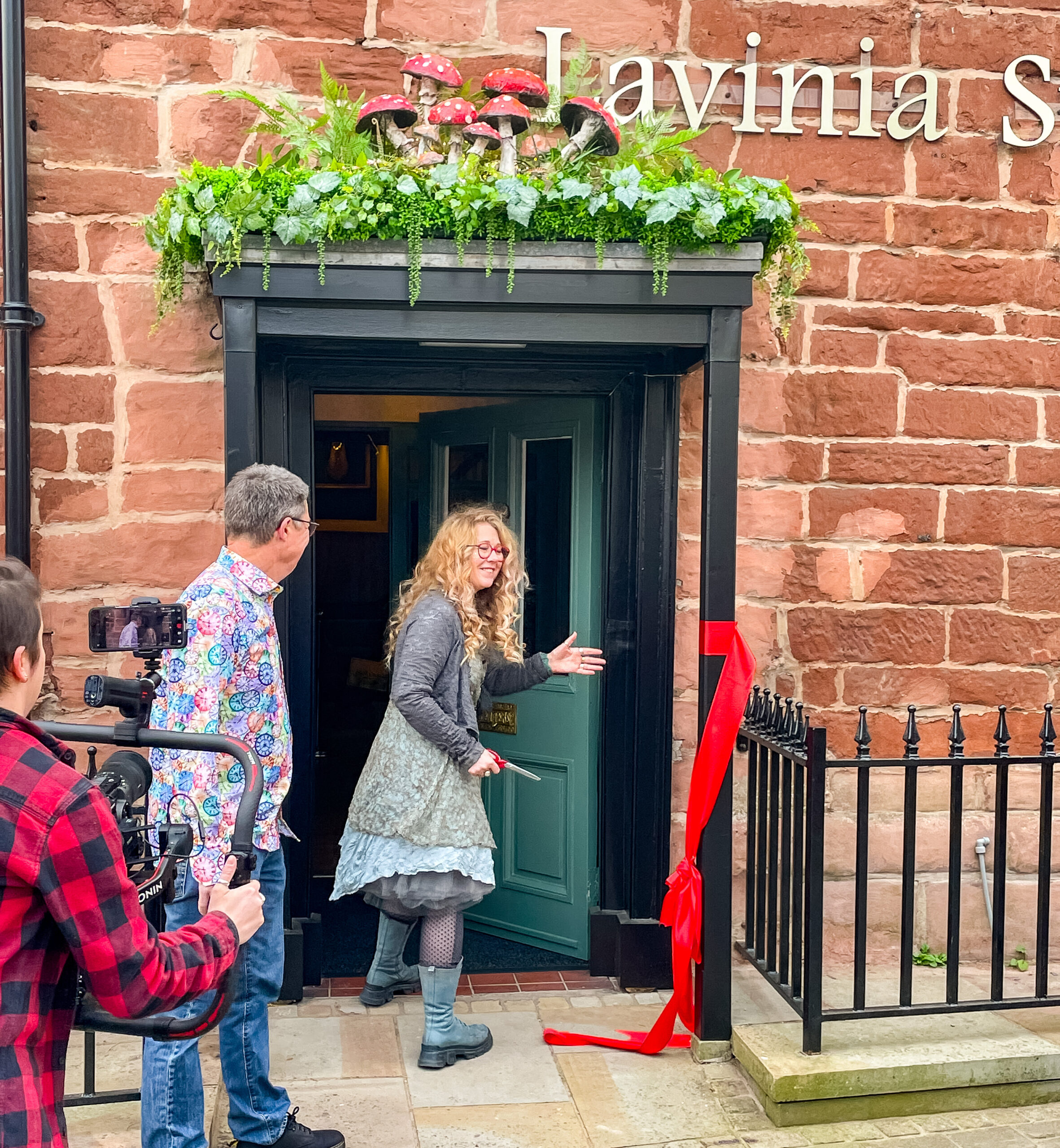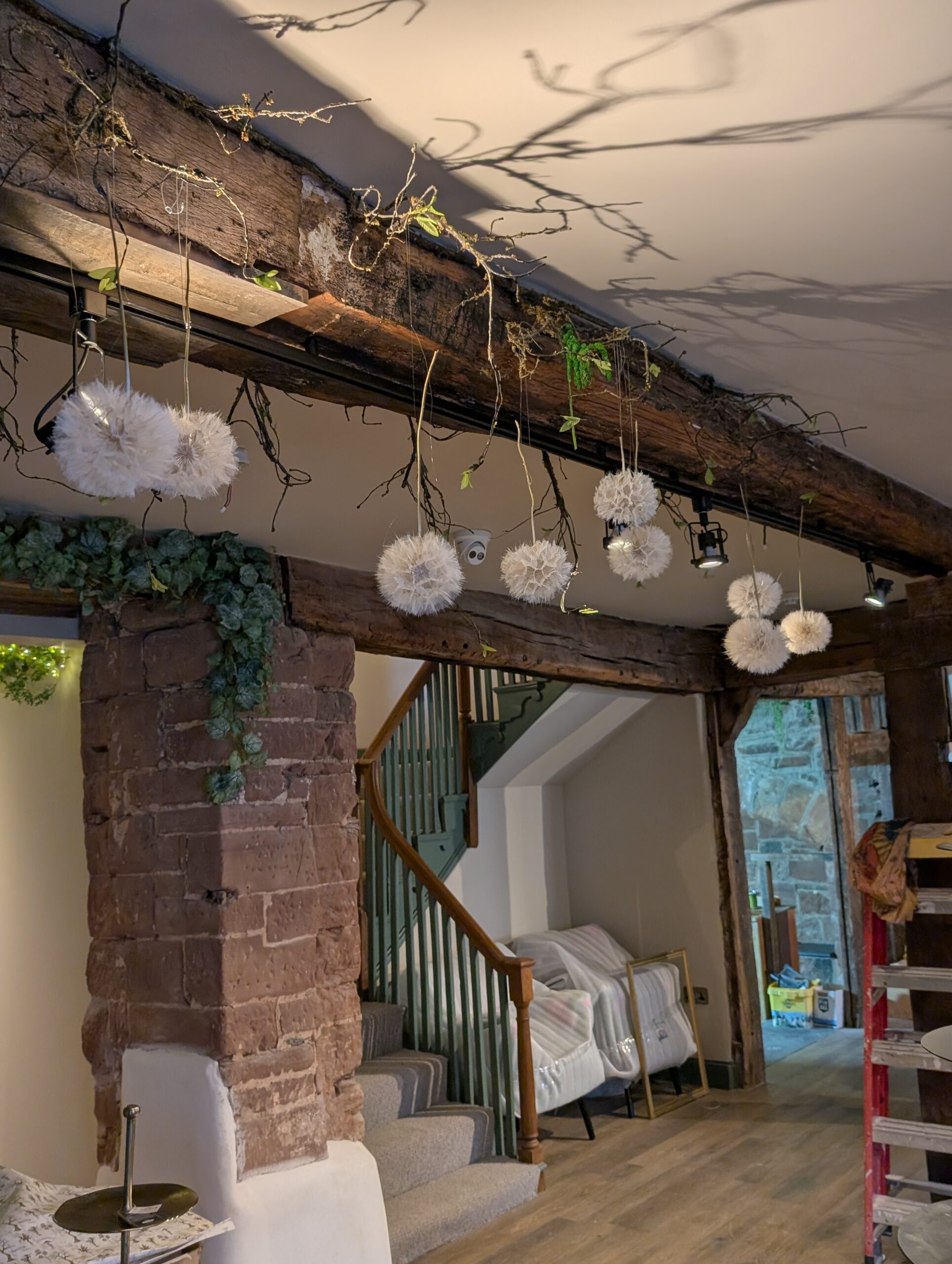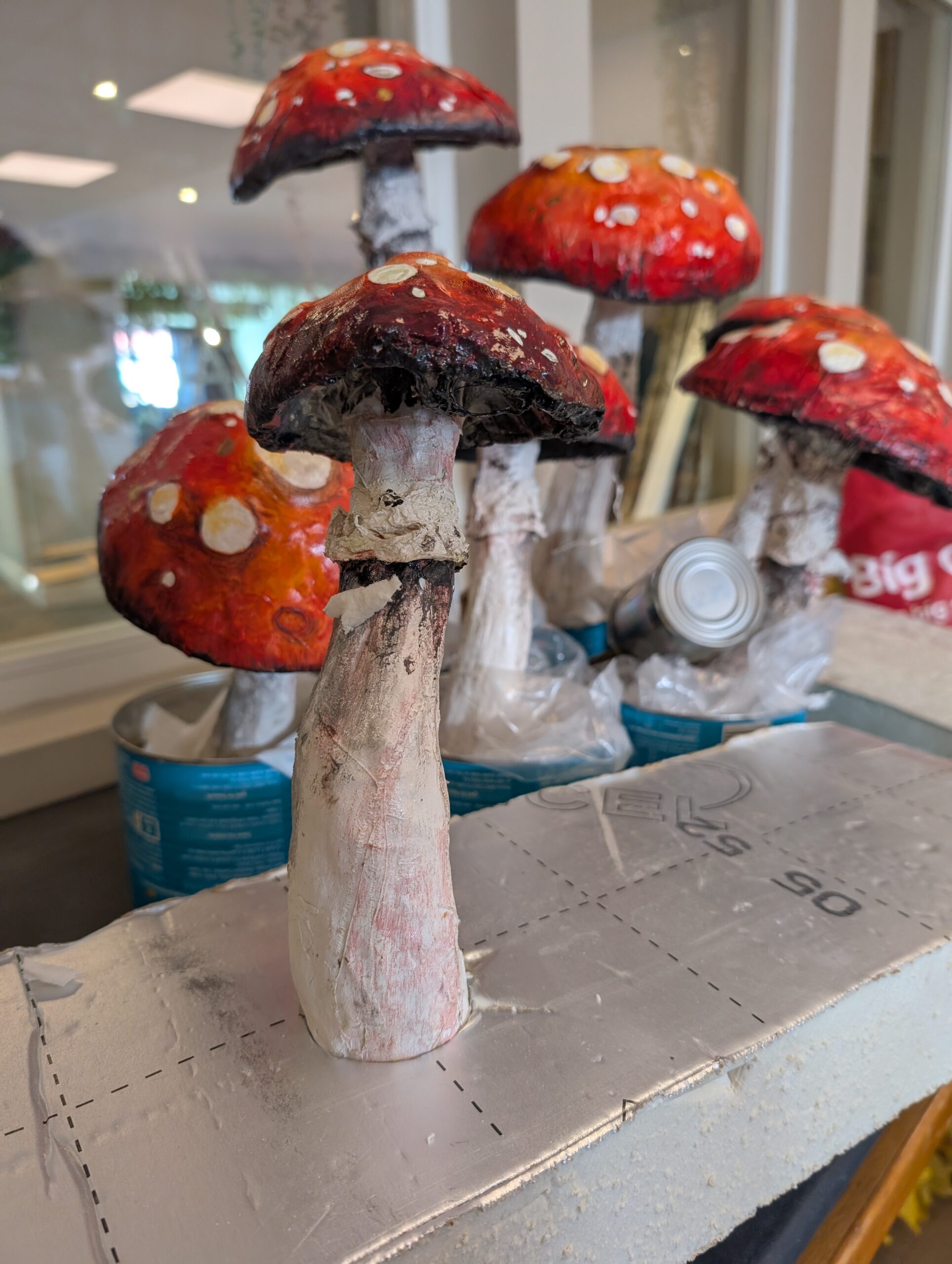Following the discovery of the shapely footings this gave us an idea of how to identify the true floorplan of the original building.
Put simply, if the footings are like that on one side…maybe they will be like that on the other?
Oh if only it were that simple!
We had many a discussion.
One theory was that it was a symmetrical building. This would involve another room that mirrored the snug and kept an alleyway in between the two.
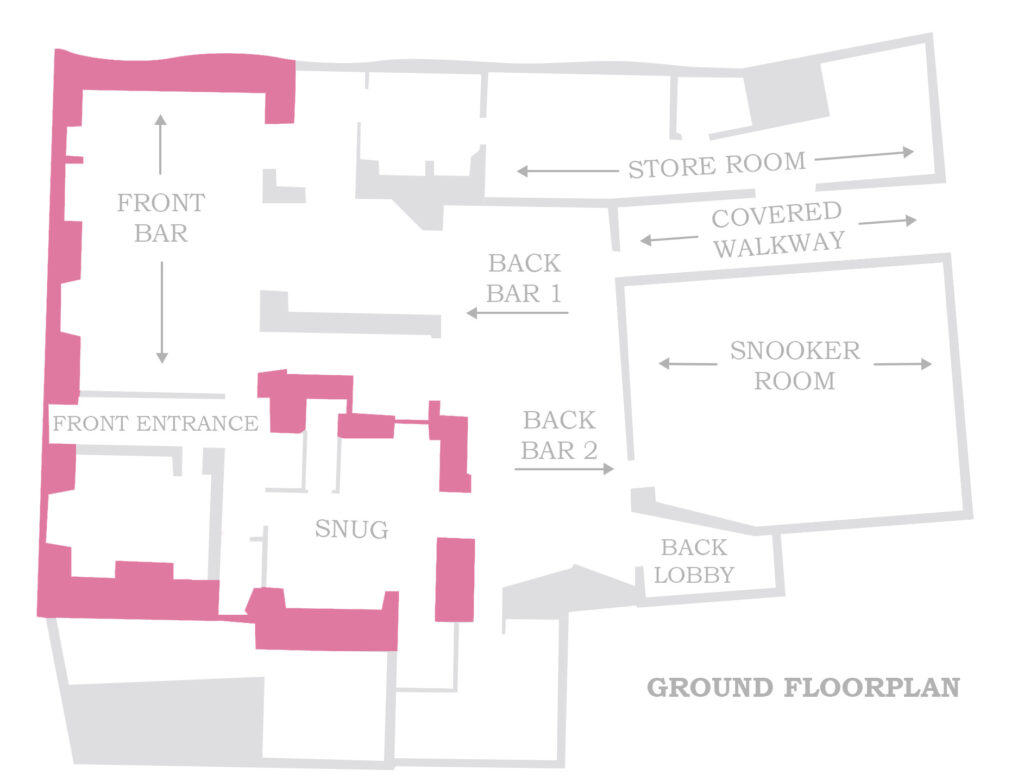
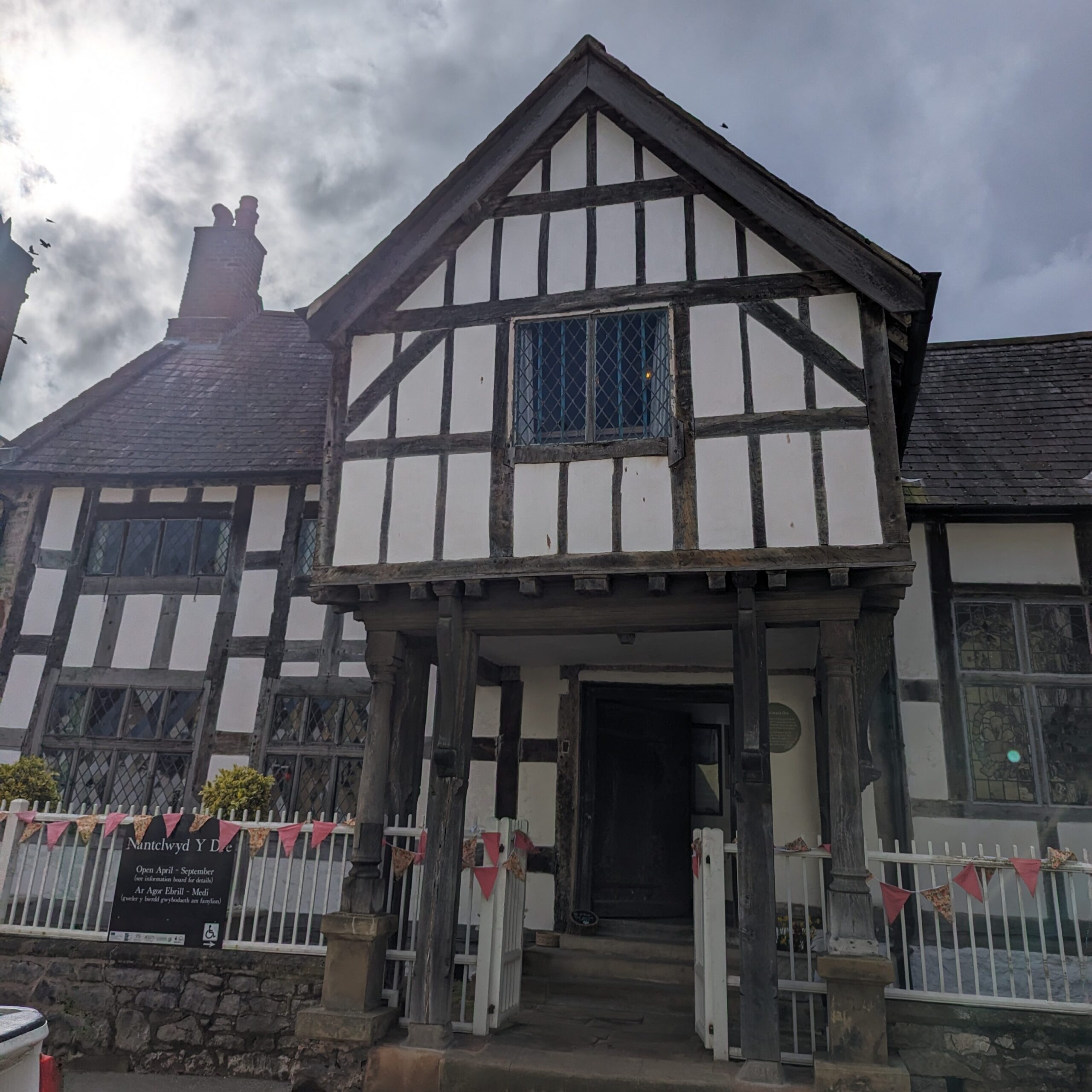
Then we fell down a rabbit hole of :
Would it be made from the original red stone?
or maybe a wooden structure?
How would this effect the rooms above?
Or would it have been like Nant Clwyd Y Dre, where the first floor is larger than the ground floor, with an overhang or jetty?
And then…
A cupboard was removed.
And a smaller, yet still shapely footing appeared.
This answers the question of where the original wall would have been and helps us identify the original floorplan.
It also tells us that at some point the outside of Plas Coch would have been plastered.
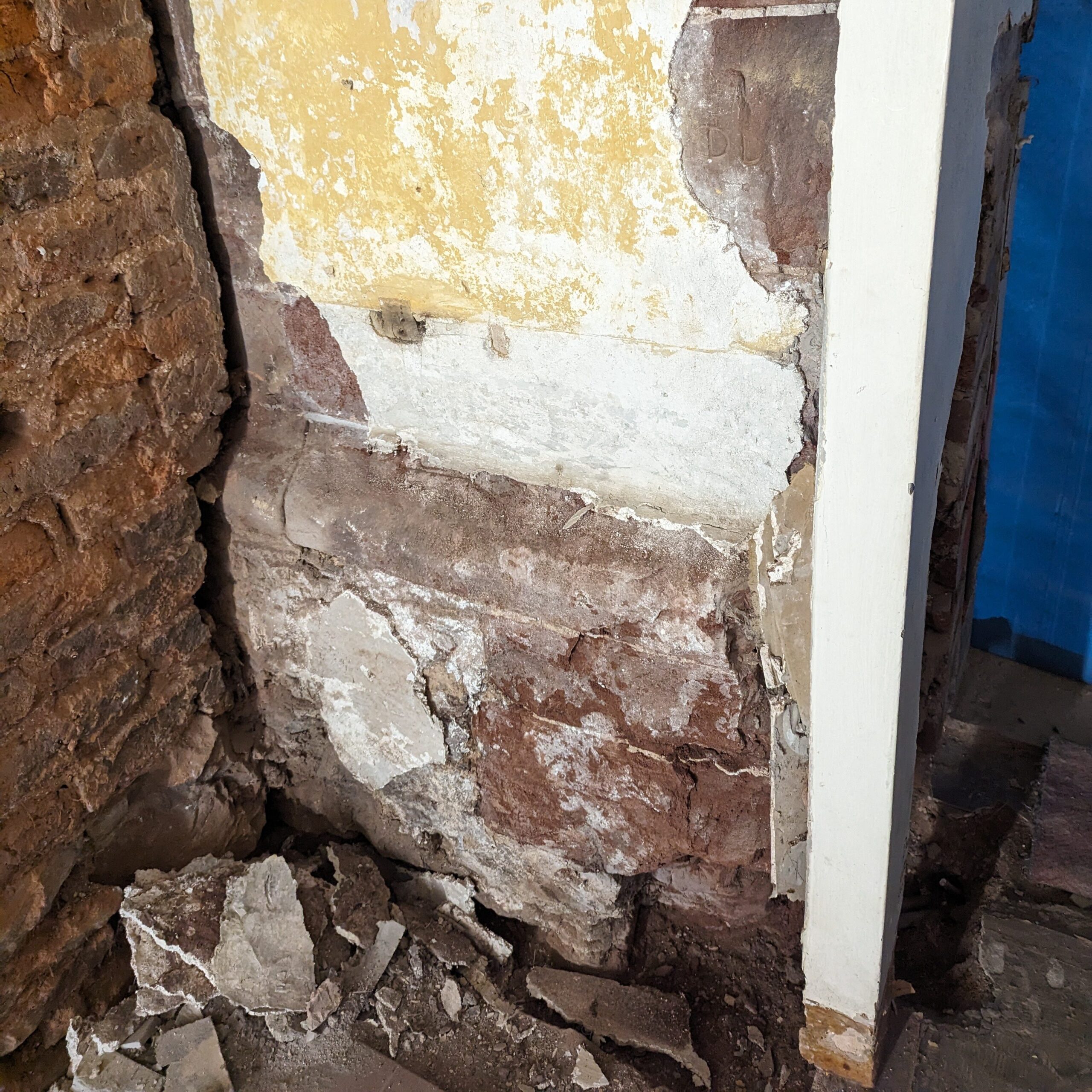
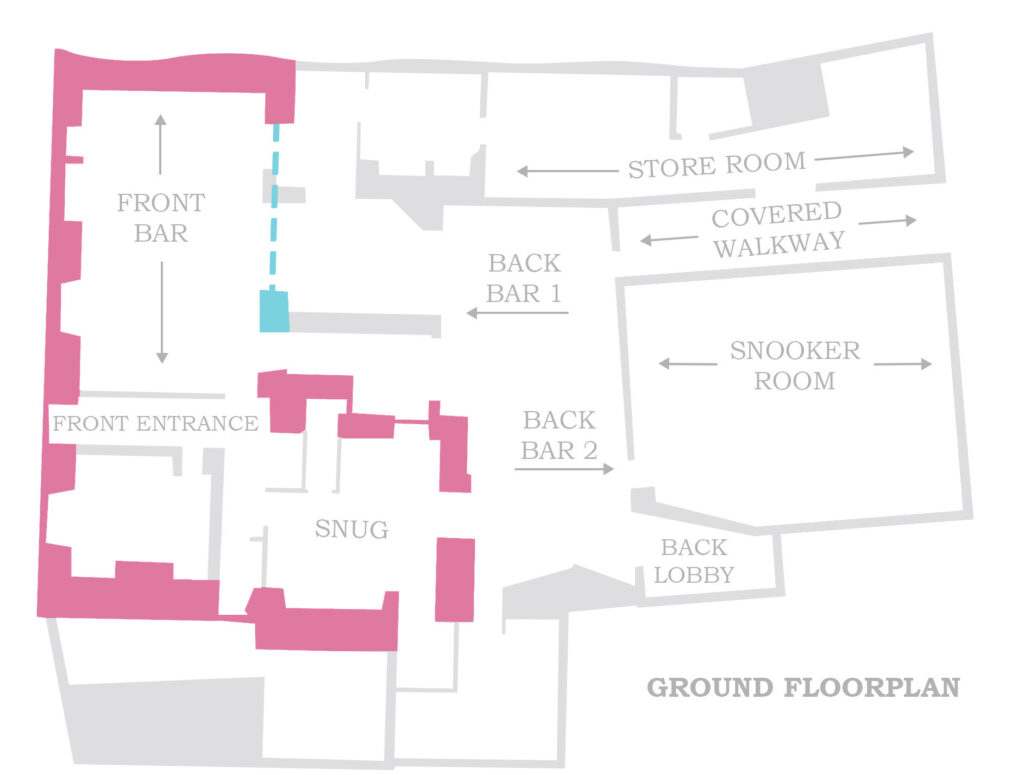
This floorplan, to the left, is probably as close as we will be able to get to identifying the original floorplan, however the next question is:
What does this mean for the brick wall that is not quite attached to the stone, as seen in the picture above?


